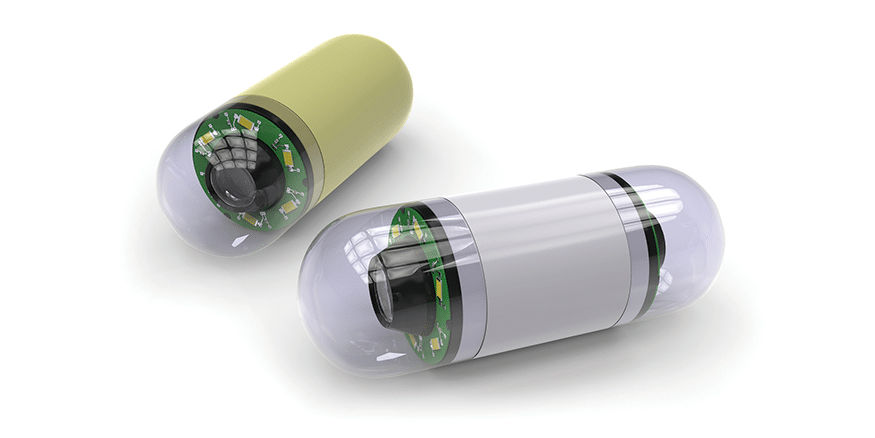- srushtigastro@gmail.com
- +91- 8073380392
Capsule Endoscope

A capsule endoscope is a non-invasive diagnostic tool used to visualize and evaluate the interior of the gastrointestinal tract, particularly the small intestine, which is challenging to access using traditional endoscopic procedures. The device typically measures around the size of a large pill, making it easy for patients to swallow.
Once ingested, the capsule endoscope travels naturally through the digestive system, propelled by peristalsis—the involuntary muscular contractions that move food along the gastrointestinal tract. As it traverses the digestive tract, the capsule captures high-quality images and videos of the intestinal walls, providing valuable insights into the presence of abnormalities, such as ulcers, polyps, bleeding, or inflammation.
The captured images and videos are transmitted wirelessly to a receiver worn by the patient, which records and stores the data for later analysis by a healthcare professional. After approximately 8-10 hours, the capsule is naturally expelled from the body through bowel movements and can be safely discarded.
Capsule endoscopy is often recommended for patients with suspected gastrointestinal bleeding, unexplained abdominal pain, inflammatory bowel disease, Crohn’s disease, celiac disease, or small intestinal tumors. It offers several advantages over traditional endoscopic procedures, including its minimally invasive nature, lack of sedation requirement, and ability to visualize regions of the gastrointestinal tract inaccessible by conventional endoscopes.
We provide the best capsule endoscope in HSR Layout. Contact us today.
Benefits:
Overall, capsule endoscopy offers a valuable diagnostic tool for evaluating gastrointestinal disorders, providing clinicians with detailed insights into the health of the digestive tract while offering patients a less invasive and more convenient alternative to traditional endoscopic procedures.
Empowering assistance, right when it matters. We’re here to lend a hand whenever you need it.

Call : +91- 8073380392
srushtigastro@gmail.com
Srushti Gastro & liver Clinic 186, 165, 9th Main Rd, Sector 6, HSR Layout, Bengaluru, Karnataka 560102